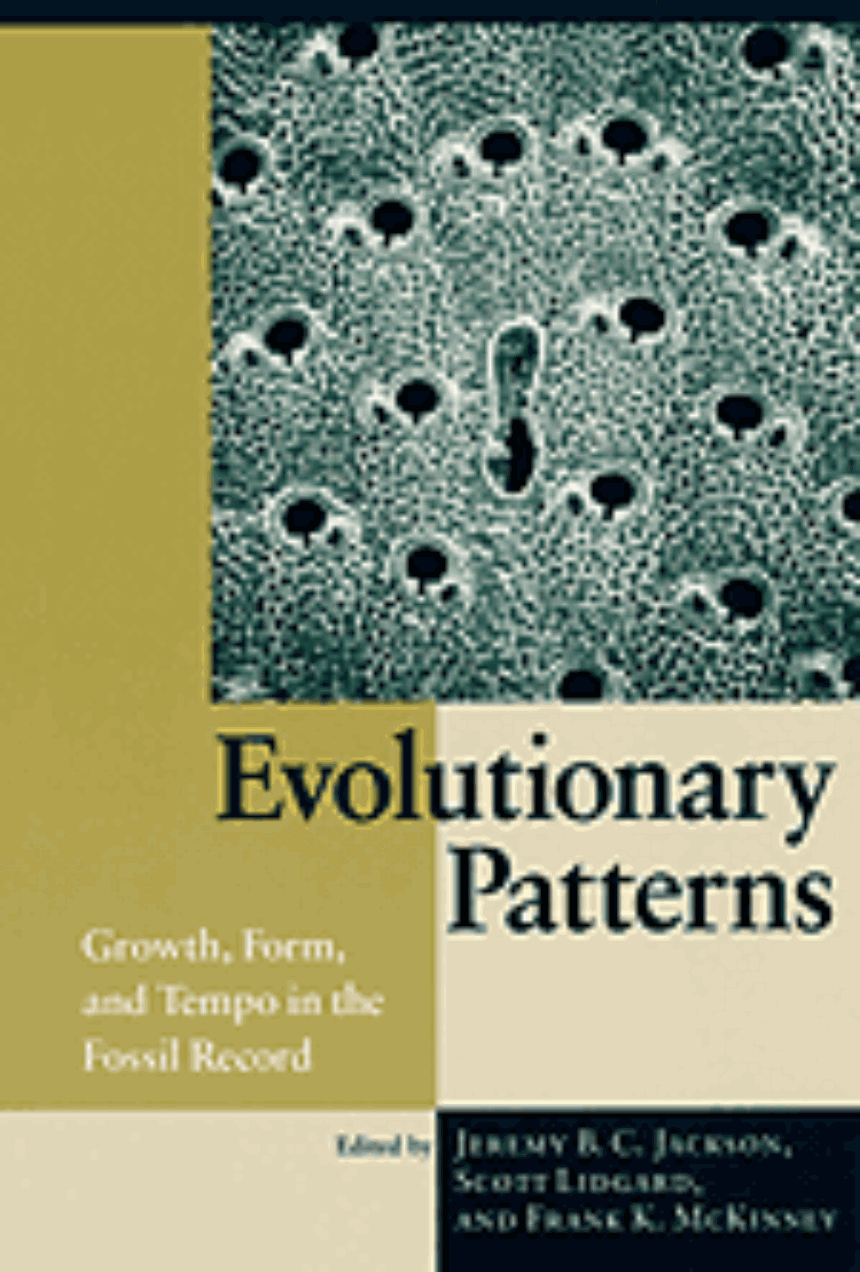Evolutionary Patterns
Growth, Form, and Tempo in the Fossil Record
With all the recent advances in molecular and evolutionary biology, one could almost wonder why we need the fossil record. Molecular sequence data can resolve taxonomic relationships, experiments with fruit flies demonstrate evolution and development in real time, and field studies of Galapagos finches have provided the strongest evidence for natural selection ever measured in the wild. What, then, can fossils teach us that living organisms cannot?
Evolutionary Patterns demonstrates the rich variety of clues to evolution that can be gleaned from the fossil record. Chief among these are the major trends and anomalies in species development revealed only by "deep time," such as periodic mass extinctions and species that remain unchanged in form for millions of years. Contributors explore modes of development, the tempo of speciation and extinction, and macroevolutionary patterns and trends. The result is an important contribution to paleobiology and evolutionary biology, and a spirited defense of the fossil record as a crucial tool for understanding evolution and development.
The contributors are Ann F. Budd, Efstathia Bura, Leo W. Buss, Mike Foote, Jörn Geister, Stephen Jay Gould, Eckart Hâkansson, Jean-Georges Harmelin, Lee-Ann C. Hayek, Jeremy B. C. Jackson, Kenneth G. Johnson, Nancy Knowlton, Scott Lidgard, Frank K. McKinney, Daniel W. McShea, Ross H. Nehm, Beth Okamura, John M. Pandolfi, Paul D. Taylor, and Erik Thomsen.
Evolutionary Patterns demonstrates the rich variety of clues to evolution that can be gleaned from the fossil record. Chief among these are the major trends and anomalies in species development revealed only by "deep time," such as periodic mass extinctions and species that remain unchanged in form for millions of years. Contributors explore modes of development, the tempo of speciation and extinction, and macroevolutionary patterns and trends. The result is an important contribution to paleobiology and evolutionary biology, and a spirited defense of the fossil record as a crucial tool for understanding evolution and development.
The contributors are Ann F. Budd, Efstathia Bura, Leo W. Buss, Mike Foote, Jörn Geister, Stephen Jay Gould, Eckart Hâkansson, Jean-Georges Harmelin, Lee-Ann C. Hayek, Jeremy B. C. Jackson, Kenneth G. Johnson, Nancy Knowlton, Scott Lidgard, Frank K. McKinney, Daniel W. McShea, Ross H. Nehm, Beth Okamura, John M. Pandolfi, Paul D. Taylor, and Erik Thomsen.
Table of Contents
Preface
Part 1. Modes of Development, Hierarchies of Morphological
Organization, and the Adaptive Significance of Colony Form
1 Growth by Intussusception in Hydractiniid Hydroids
2 Parts and Integration: Consequences of Hierarchy
3 Refuges Revisited: Enemies versus Flow and Feeding as
Determinants of Sessile Animal Distribution and Form
Part 2.Recognition of Species, and the Tempo of
Speciation and Extinction
4 Recognizing Coral Species Present and Past
5 Geologically Sudden Extinction of Two Widespread
Late Pleistocene Caribbean Reef Corals
6 Linking Macroevolutionary Pattern and
Developmental Process in Marginellid Gastropods
7 The Interrelationship of Speciation and
Punctuated Equilibrium
Part 3.Macroevolutionary Patterns and Trends
8 On the Ends of the Taxon Range Problem
9 Evolutionary Rates and the Age Distribution of
Living and Extinct Taxa
10 Contrasting Patterns in Rare and Abundant Species
during Evolutionary Turnover
11 Asexual Propagation in Cheilostome Bryozoa:
Evolutionary Trends in a Major Groups of
Colonial Animals
12 Macroevolutionary Trends: Perception Depends on
the Measure Used
List of Contributors
Index
Part 1. Modes of Development, Hierarchies of Morphological
Organization, and the Adaptive Significance of Colony Form
1 Growth by Intussusception in Hydractiniid Hydroids
2 Parts and Integration: Consequences of Hierarchy
3 Refuges Revisited: Enemies versus Flow and Feeding as
Determinants of Sessile Animal Distribution and Form
Part 2.Recognition of Species, and the Tempo of
Speciation and Extinction
4 Recognizing Coral Species Present and Past
5 Geologically Sudden Extinction of Two Widespread
Late Pleistocene Caribbean Reef Corals
6 Linking Macroevolutionary Pattern and
Developmental Process in Marginellid Gastropods
7 The Interrelationship of Speciation and
Punctuated Equilibrium
Part 3.Macroevolutionary Patterns and Trends
8 On the Ends of the Taxon Range Problem
9 Evolutionary Rates and the Age Distribution of
Living and Extinct Taxa
10 Contrasting Patterns in Rare and Abundant Species
during Evolutionary Turnover
11 Asexual Propagation in Cheilostome Bryozoa:
Evolutionary Trends in a Major Groups of
Colonial Animals
12 Macroevolutionary Trends: Perception Depends on
the Measure Used
List of Contributors
Index
